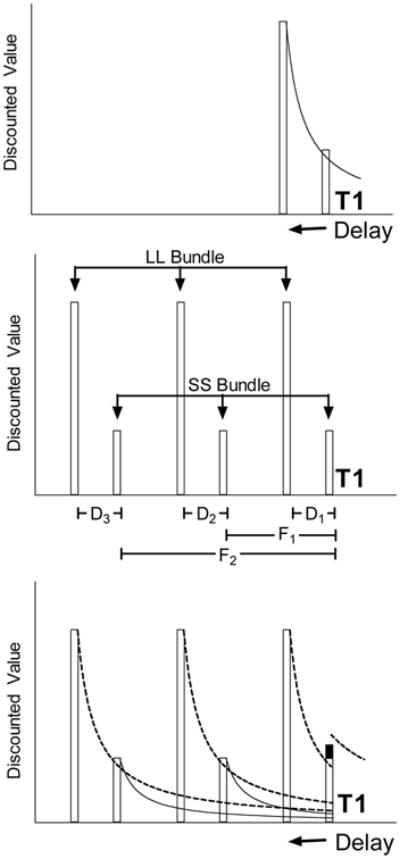Figure 1.

The top panel illustrates how the value of a larger-later (LL) reward declines as the delay to its delivery increases. At time T1 the discounted value of the LL reward falls below the smaller-sooner (SS) reward and so the impulsive choice for the SS reward is made. The middle panel illustrates how three SS or three LL rewards may be bundled together. A single choice at T1 results in delivery of either the SS or LL bundle. The bottom panel shows hyperbolic delay discounting curves obtained using the same parameters used in the top panel. At T1 the sum of the discounted values of the rewards in the SS bundle is given by the height of the SS reward bar to the left of T1 (the filled portion shows that portion contributed by the sum of the delayed SS rewards). The discounting curve appearing above T1 is the sum of the LL discounting functions (dashed curves) at the times shown. At T1, when the first reward in the SS bundle may be obtained now, the discounted value of the LL bundle exceeds that of the SS bundle. Thus, by bundling rewards, choice should theoretically shift from impulsivity (top panel) to self-control (bottom panel).
